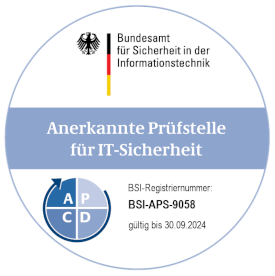The focus of the requirements analysis are the protection objectives, i.e. the requirements that you place on the IT security of your device. If your device is an industrial control system, uninterrupted operation is high priority. If you want to protect your intellectual property it is important that an attacker cannot read the firmware from the device. A smart home device, on the other hand, must protect personal data by means of encrypted transmission.
You may already know the protection objectives of your device very well. Otherwise, we will determine them together with you. A simple approach might be the question: What are the worst-case scenarios when an IT attack is launched on your device?
In the penetration test we will try to violate these protection objectives of your device. To do this optimally, we need an attacker model. In this model, you describe the essential properties of the attacker you want to protect against.
Does the attacker have physical access to your device or can he only access it via a network? In the case of an e-charging station installed in public places physical access is possible. However, a router is operated in an access-restricted environment. It is therefore inaccessible to the attacker and physical security is not relevant.
Complex devices often support a role concept. Here, the strict separation of roles is important for the security of your device. Can a guest user really only view data or can he perhaps also change its configuration?
In this way, you give our IoT penetration test a clear and individual direction.
In addition, the attack surface of your device is also an important part of the requirements analysis. This includes in particular technical questions about interfaces and communication.




